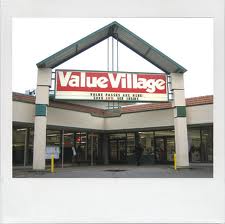With the increasing trend in eco-friendly ideas of saving the planet, recycling, re-using and re-purposing, thrift stores are becoming viable businesses to run. In a recent newsletter, NARTS – a USA based association of used good retailers points ouut that the used goods business is one of the few recession proof segments of retailing that not only survives during economic downturns but grows and thrives during a recession.
Thrift stores can specialize in different areas. Examples are vintage clothing stores, antique collectibles, used furniture stores, used book stores, vintage jewellery stores, or used department stores that sell everything.
It is a common misconception that thrift stores are not-for-profit organizations. This is not true at all. In fact, the best know thrift store called “Value Village” is aggressively expalnding, and as of June 2008, it has a total of 215 stores (each averaging 25,000 square feet) in Canada and the USA. In September of 2010, Value Village opened the doors to their 250th outlet which represents a 16% increase in just over 2 years.
Under Value Village’s business model, the company partners with local non-profits by purchasing and reselling donated items. The non-profits collect and deliver donated goods to Value Village, which pays them for the items at a bulk rate regardless of whether they ever make it to the sales floor. Donations are also collected at stores directly, and the company makes payments to its non-profit partners when it receives goods this way. Value Village has more than 160 non-profit partners throughout the United States, Canada and Australia, which it pays more than $117 million annually.
Items deemed resellable are displayed for purchase in stores. Value Village also has a recycling program and attempts to recycle any reusable items that cannot be sold at the stores, as well as any items that do not sell over a period of time to make room for fresh merchandise. Savers has buyers for its recyclables throughout the world and attempts to keep as much donated product out of the waste stream as possible.
Find out more about How to Start a Second Hand Thrift Store.

